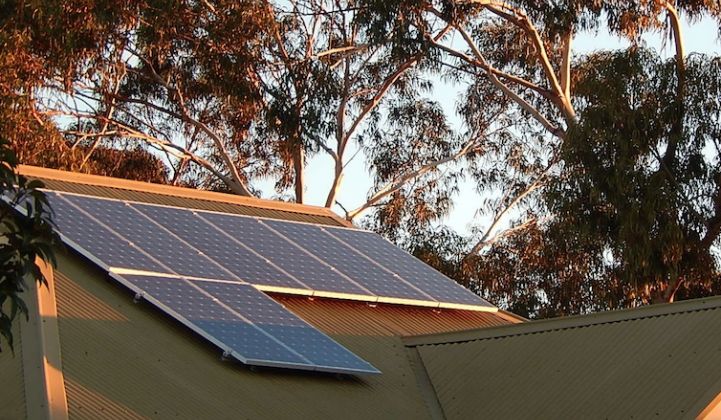The Australian government has announced that it wants to accelerate the deployment of battery storage in Australian households, chiefly as a means to reduce huge peaks in demand and reduce costs for consumers, but also to cut emissions.
Environment minister Greg Hunt says he wants the two institutions within his department -- the Clean Energy Finance Corporation (CEFC) and the Australian Renewable Energy Agency (ARENA) -- to bring forward the widespread deployment of battery storage.
“Australia has the highest rate of household solar in the world,” Hunt said in emailed comments. “This makes Australia an ideal place to develop storage and battery technology.”
Indeed, the battery storage market in Australia is expected to take off in the next year. One of the triggers will be the arrival of the first Tesla Powerwall products in Australia in the next two months, although other international manufacturers such as Panasonic, LG, and Kokam already have products on the market.
Next week, Enphase will launch its plug-and-play battery storage product into Australia. Like Tesla, Enphase is targeting Australia because of the unique nature of its markets -- high electricity prices driven by soaring grid costs, particularly to meet “peak” demand, the world’s biggest penetration of rooftop solar, and lots of sun.
Added to this, tariffs are also being changed in New South Wales, Victoria and South Australia, which will mean that some 230,000 households accustomed to receiving premium tariffs will get little or no payments for exports to the grid. Those who produce more electricity than they need will then have an incentive to store it for use in the evening.
Both Tesla and Enphase believe that parts of the market are already at grid parity. However, it should be pointed out that this is a complex calculation, depending on solar array size and orientation, consumption patterns and tariff structure.
It has taken a long time for the Australian federal government to realize the opportunities in household solar and storage. But now both the Coalition and Labor are enthusiastically talking up the opportunities of households leading the energy revolution.
Hunt says he recognizes this and wants to accelerate the rollout, while also promoting local battery storage technology.
“Australia has a large market for storage, with a high number of residential solar users that could benefit from storage technologies,” he said. “Storage is also good for grids and networks -- it can smooth out energy supply, reduce peak loads, mitigate the need for network upgrades, and allow utilities to better manage power supply and demand."
ARENA and the CEFC have already been active in the battery storage space at the household level. ARENA CEO Ivor Frischknecht has said he expects a decrease in battery costs of between 40 percent and 60 percent by 2020, and says that 1 million homes are hungry for battery storage. Morgan Stanley has predicted that 2.4 million homes could use the technology within 10 years. BNEF predicts an even higher uptake by 2035.
ARENA has funded battery storage developers such as Ecoult and SinoEV, as well as storage integrator Sunverge. It funded research by AECOM that identified battery storage as one of the industry’s “megatrends," and has backed the development of a national energy storage “knowledge bank," based out of the University of Adelaide.
ARENA is also supporting trials being run by Ergon Energy and Sunverge that will assess how battery storage can help households trade their output of solar, and even combine to act as a “virtual power station” to respond to grid demands. Ergon has already installed battery storage at grid level, saying it is cutting costs by around 30 percent.
Another trial based on a similar concept of using solar and storage to trade power is being run by Reposit Power in Canberra, also funded by ARENA. The agency is also funding trials in Canberra by IT Power that compare the performance of lithium-ion and lead-acid batteries.
The agency is also funding large-scale battery storage installations at Coober Pedy, Rio Tinto’s Weipa mine, Sandfire Resource’s DeGrussa copper mine in Western Australia, and a large-scale storage project in South Australia, which already sources 40 percent of its electricity demand from variable wind and solar.
The CEFC says it is also supporting battery storage through its provision of low-cost finance via banking groups CBA and NAB, as well as Origin Energy. It is also financing the DeGrussa solar-plus-storage installation.
***
Giles Parkinson is the editor of RenewEconomy. This piece was originally published at RenewEconomy and was reprinted with permission.



